The Bird of Paradise is a tropical plant in the family better known as gingers. This family includes 7 species of plants ranging from a few feet in height up to 5 metres (16 feet), like for example the Traveller’s Palm (Ravenala madagascariensis).
The Bird of Paradise always makes a statement and the ultimate magnificence of a mature plant will command attention above everything around it. This would be the perfect specimen plant for the ‘wow’ factor, especially when space is at a premium.
The most common species found in the UK are the Strelitzia reginae. Their distinctively striking orange flowers are set to impress.
Other species of Strelitzia, like Strelitzia nicolai or Strelitzia augusta are mainly cultivated for their impressive foliage, rather than flowers.
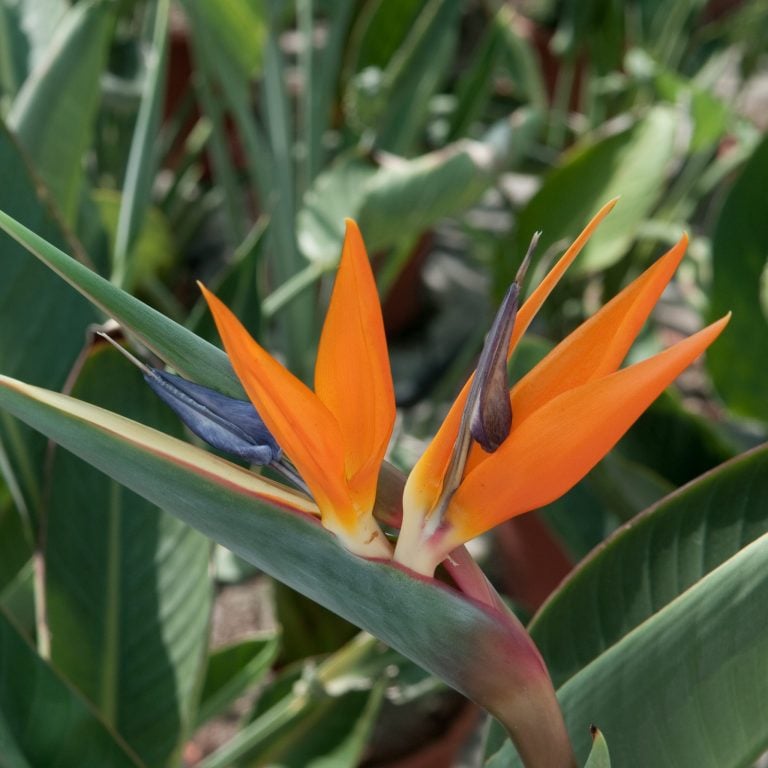
Positioning
The Bird of Paradise requires full sun or a bright spot inside, but it will tolerate lightly shaded positions if kept warm, though its flowering may be diminished. Avoid places that are too close to a window or hot radiators.
A north facing room should be avoided in the long run, as the plant can cope only for a short while with a darker position. This will slow down growth and the likelihood of flowers is very low.
During winter periods, the plant will go dormant and is best kept in rooms that don’t have high temperature fluctuations but remain above 13 degrees centigrade.
In the UK, the Bird of Paradise plants are best kept indoors and only during summer the plant can be taken outside and placed in a semi-shaded location with good air circulation, providing it with 3-4 hours of direct sunlight.
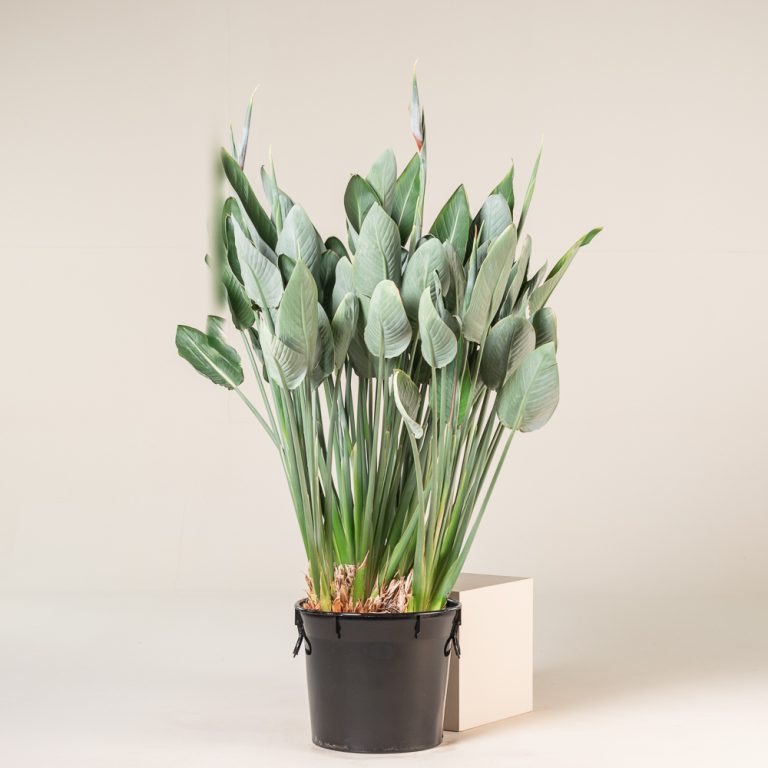
Soil
The Bird of Paradise is not too fussy as to its soil, which is evidenced by the wide variety of soils it grows in. However, a general purpose indoor plant mix is suitable with good drainage.
Flowering plants should not be disturbed from their pots. However once a year, in spring, it is recommended to top-dress the plants with fresh good quality potting mix.
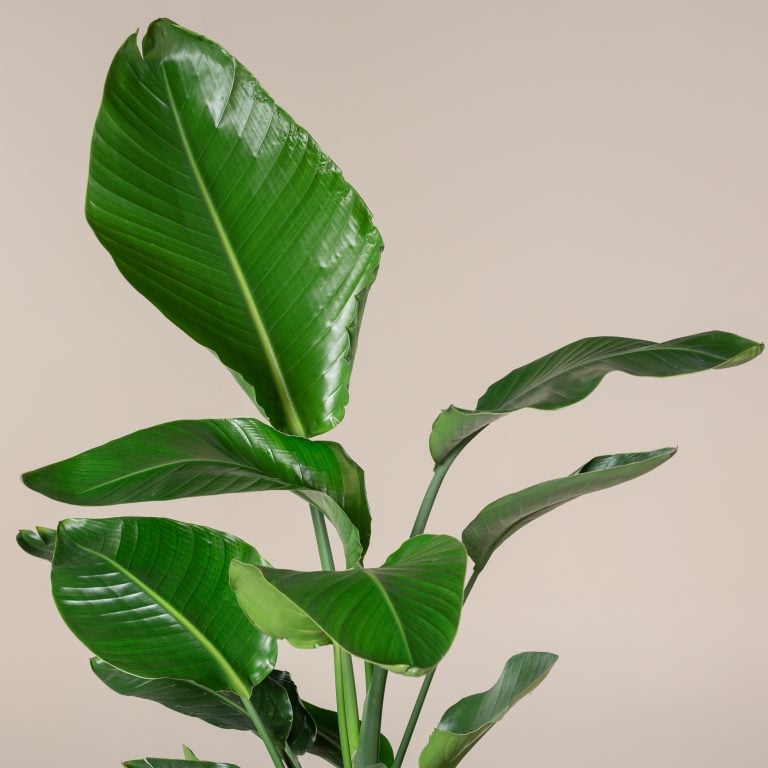
Watering
Watering in the growing period should be done moderately, and it’s very important to have good drainage in the pot so that the plant doesn’t become water logged. As a good rule of thumb, it is best to leave the soil to dry out between waterings so that the top inch of soil feels dry to the touch. During the rest period over winter, give just enough to prevent the soil mixture from drying out completely.
If the air is very dry, occasional misting would be helpful to help remove the dust that inevitably settles on the leaves.
An important sign that the plant is not receiving enough water is that the leaves will start curling, splitting, and turning brown.
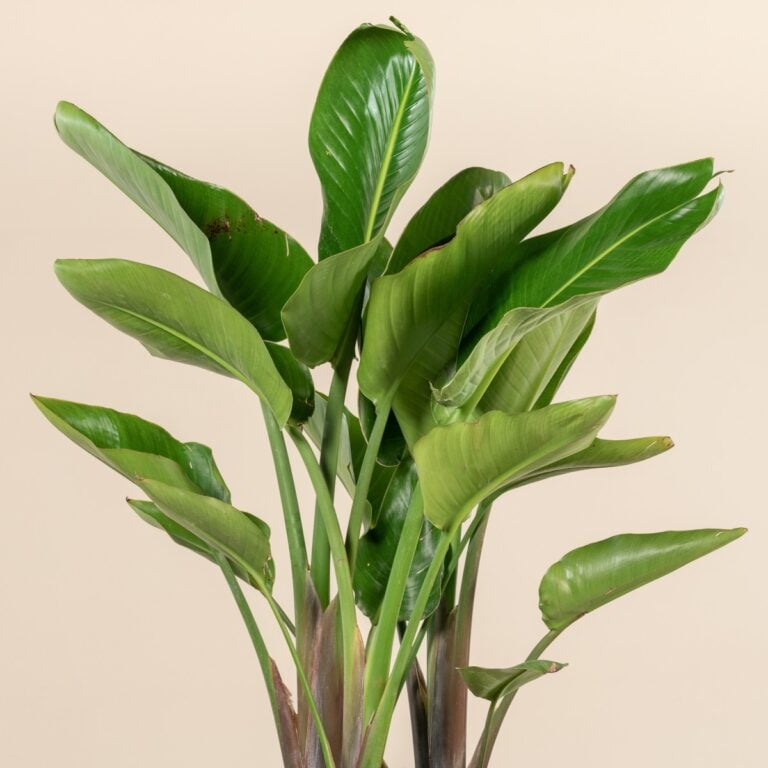
Feeding
For best growth and flowering, Birds of Paradise require fertilization. Never feed more than recommended though, as this can have dire consequences.
Use any balanced indoor fertilizer during the spring and summer e.g. Baby Bio or Happy House. Apply feed to the pot only during the growth period.
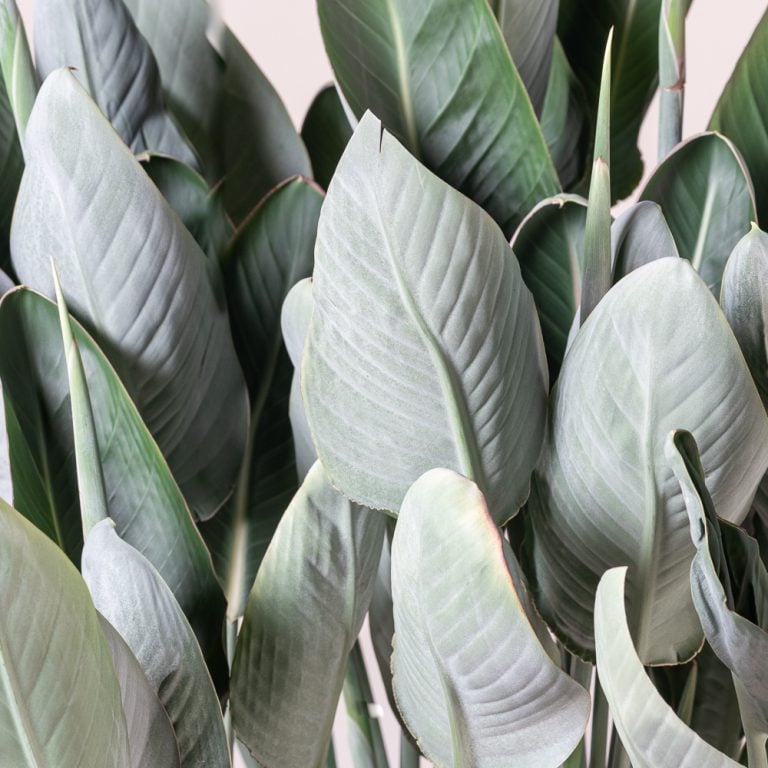
Pruning
Any pruning should be done in spring, cutting away faded blooms and flower stalks, as close to the base as possible with a clean knife or scissors.
Remove only leaves that are wilted and avoid removing healthy leaves if you think the plant is becoming too big. This will impact future growth and looks.
Cut the leaves close to the base, at 45 degrees angle leaving the midrib of the leaf stem shorter. In time, it will dry out and it can be plucked with no effort.
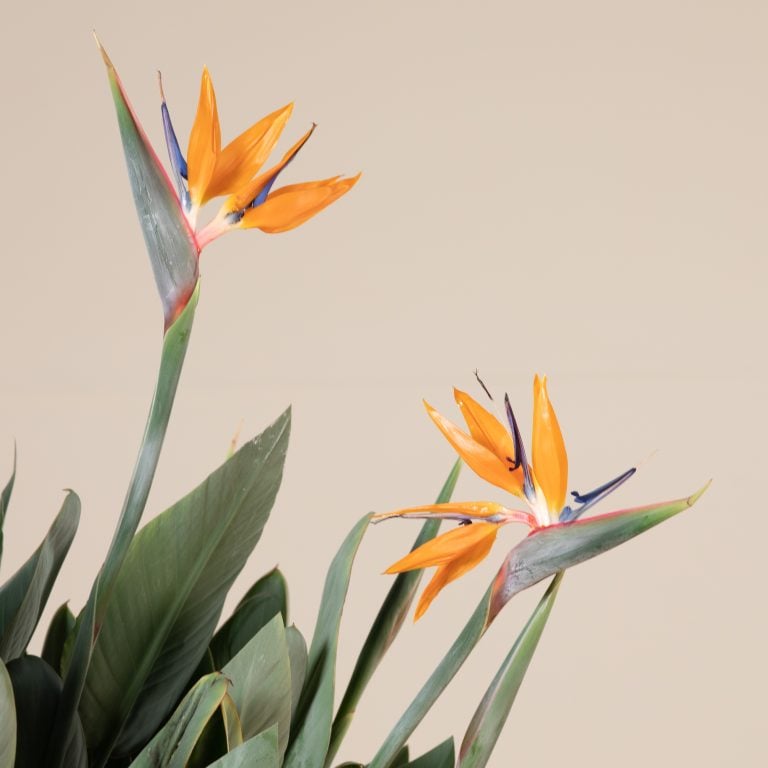
Flowering
One of the most common reasons the Bird of Paradise blooms fail to flower is insufficient light. These plants require at least four to six hours of full sun (or bright light indoors) in order to bloom sufficiently.
First of all, it’s important to note that they generally bloom best from large clumps or when slightly pot bound. For this reason, dividing is seldom necessary. In the early years of growth, it’s perfectly fine to repot the plant every year, or even every two years. However, once it has reached maturity, repotting might disrupt the flowering cycle.
Once the plant reaches 4-5 years of age, it’s best kept in the same pot, even if pot bound. This will encourage flowering.